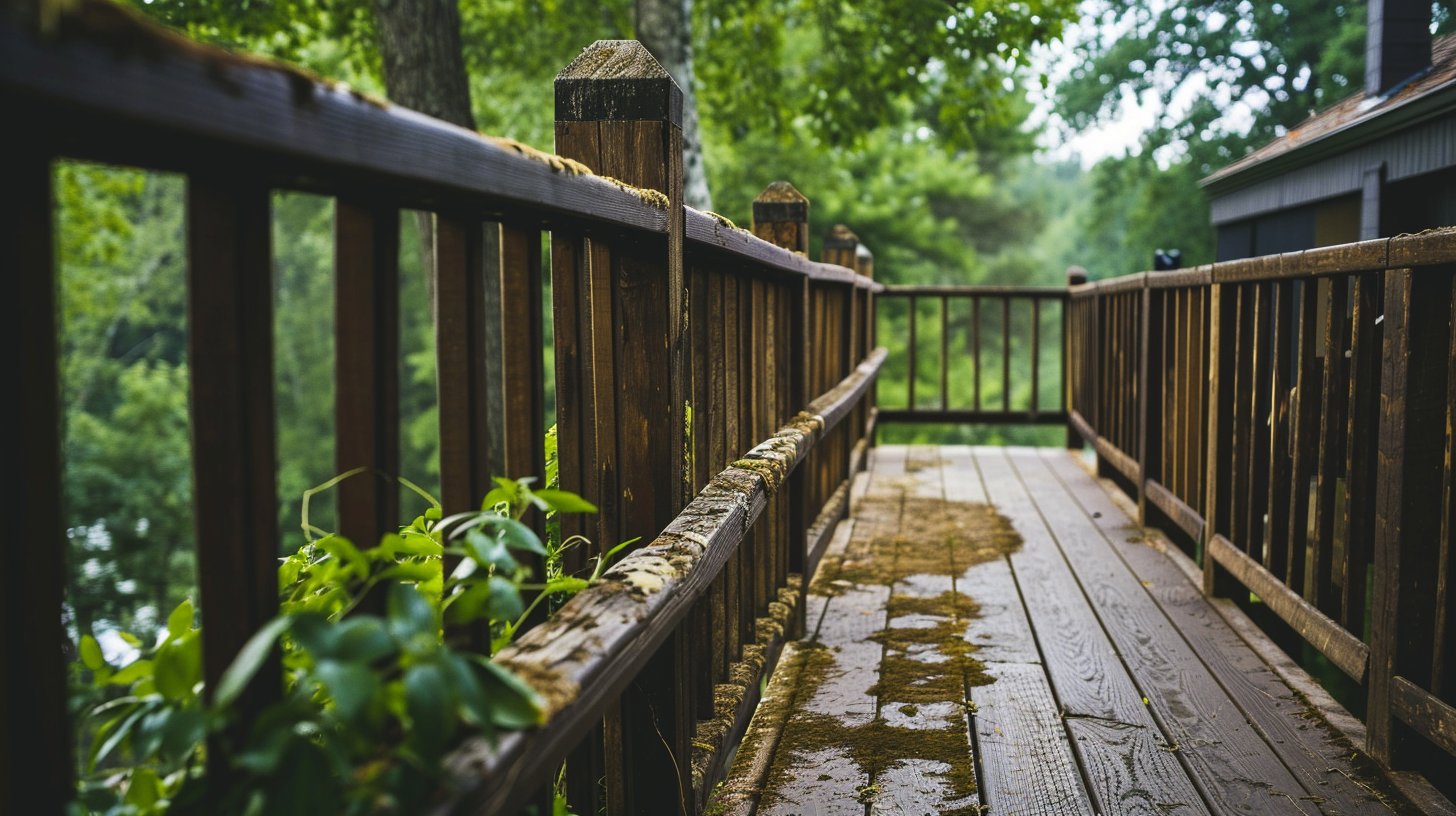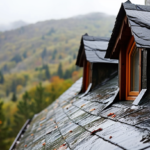Last Updated on 26th December 2023
In this article, we will provide a step-by-step guide on how to repair a damaged deck railing. Whether it’s due to wear and tear or unforeseen accidents, a damaged deck railing can compromise safety and aesthetics. By following our professional advice and utilizing the right tools and materials, you will be able to assess, remove, secure, replace, and maintain your deck railing effectively. Keep reading to learn the necessary techniques to restore your deck railing to its former strength and beauty.
Assess the Extent of the Damage
In order to determine the appropriate course of action, a thorough assessment of the extent of the damage to the deck railing must be conducted. Assessing the damage is crucial to understanding the scope of the repairs needed. Start by inspecting the railing thoroughly, checking for any visible signs of damage such as cracks, rot, or loose components. It is also important to evaluate the overall stability of the railing by testing its strength and rigidity. Additionally, consider the age and material of the railing, as these factors can affect the extent of the damage. Once the assessment is complete, it is easier to assess repair options. Evaluating different methods for repairing a damaged deck railing, such as replacing individual components or the entire railing, can help in making an informed decision.
Remove Any Loose or Damaged Railing Components
To ensure the safety and stability of the deck railing, it is crucial to remove any loose or damaged components. Start by inspecting the railing for weak spots and identifying any loose or broken parts. Secure any loose railing by tightening screws or replacing missing fasteners. Replace any damaged components with new ones to restore the railing’s integrity.
Identify Weak Spots
The weak spots in the deck railing should be identified and any loose or damaged components must be removed promptly. Strengthening weak spots is crucial to prevent future damage and ensure the safety of the deck. When identifying weak spots, it is important to thoroughly inspect the railing for signs of wear and tear, such as loose screws, cracked wood, or rusted metal. These weak spots can compromise the structural integrity of the railing and pose a safety risk. Once identified, the damaged components should be replaced or reinforced to prevent further deterioration. Strengthening weak spots may involve tightening screws, replacing damaged wood, or reinforcing metal parts with additional support. Regular maintenance and inspection of the deck railing can help identify weak spots early and prevent more extensive damage in the future.
Secure Loose Railing
A thorough inspection of the deck railing is necessary to identify any loose or damaged components that need to be promptly secured or removed. Strengthening connections and reinforcing weak points are essential steps to ensure the safety and longevity of the railing. Loose screws or nails should be tightened or replaced with longer ones to provide a secure connection. Any damaged or rotting wood should be repaired or replaced to maintain the structural integrity of the railing. Reinforcing weak points can be done by adding additional support or bracing to areas that are prone to excessive movement or stress. Regular maintenance and inspections are crucial in preventing accidents and ensuring the deck railing remains strong and secure for years to come.
Replace Damaged Parts
Inspect the deck railing for any loose or damaged components, and promptly replace them to maintain the safety and integrity of the structure. Regular inspection and maintenance of the deck railing are crucial to ensure its longevity and prevent accidents. Damaged parts can compromise the stability of the railing, posing a risk to anyone using the deck. It is important to identify and replace any damaged parts as soon as possible. When replacing damaged parts, it is essential to use high-quality materials that are suitable for outdoor use and can withstand the elements. Additionally, proper maintenance techniques such as regular cleaning, sealing, and staining can help prevent damage and extend the lifespan of the deck railing. By following these practices, homeowners can ensure the safety and durability of their deck railings for years to come.
Secure Loose Railing Posts or Balusters
How can one effectively secure loose railing posts or balusters to ensure the safety and stability of the deck? When it comes to common railing issues, loose posts and balusters are among the most prevalent. To address these problems, there are several repair techniques that can be employed. One method is to reinforce the connection between the posts and the deck frame using metal brackets or structural screws. These can be installed to provide additional support and prevent further loosening. Another solution is to use epoxy or wood glue to secure loose balusters. By applying these adhesives to the joint between the baluster and the railing, it can help strengthen the bond and reduce wobbling. Regularly inspecting and maintaining the deck railing is crucial to ensure its stability and prevent accidents.
Replace Broken or Cracked Railing Sections
To maintain the safety and aesthetics of your deck, promptly replacing broken or cracked railing sections is essential. Prevention methods for deck railing damage include regular inspections, proper maintenance, and protecting the railing from harsh weather conditions. However, accidents or wear and tear may still occur, requiring the replacement of damaged sections. Fortunately, there are cost-effective alternatives to replacing the entire railing system. One option is to replace only the damaged sections while keeping the rest intact. This can be achieved by carefully measuring the length and height of the damaged section and purchasing a matching replacement. Another alternative is to repair the damaged section by using epoxy or filler to fix minor cracks or chips. However, it is important to ensure that the repaired section is structurally sound and can support the weight and pressure of the railing. Ultimately, regular maintenance and timely repairs are key to preserving the integrity and longevity of your deck railing.
Sand and Smooth the Repaired Areas
Once the broken or cracked railing sections have been replaced, the next step is to sand and smooth the repaired areas. This will ensure evenness and eliminate any imperfections caused during the repair process. Sanding is essential for achieving a professional and polished finish, allowing for a seamless integration of the repaired sections with the rest of the deck railing.
Sanding for Evenness
During the deck repair process, it is crucial to carefully sand and smooth the repaired areas to ensure evenness. Sanding techniques and proper sandpaper grit selection play a significant role in achieving a smooth and professional finish. When sanding a deck, it is essential to start with a coarse grit sandpaper, such as 60 or 80 grit, to remove any rough surfaces or splinters. This initial sanding will help create a level surface for further sanding. As the process continues, gradually switch to finer grit sandpaper, such as 120 or 150 grit, to refine the surface and remove any remaining imperfections. It is important to use long, even strokes when sanding to avoid creating uneven areas. Additionally, periodically inspect the sanded areas to ensure they are smooth and free from any blemishes or irregularities. By following proper sanding techniques and selecting the appropriate sandpaper grit, you can achieve a beautifully restored deck railing.
Smoothing Out Imperfections
In order to achieve a flawless finish, it is necessary to carefully sand and smooth out imperfections in the repaired areas of the deck railing. Smoothing techniques play a crucial role in ensuring that the repaired sections blend seamlessly with the rest of the railing. When filling cracks, it is essential to use a high-quality wood filler that matches the color and grain of the deck railing. This will help to create a uniform look and prevent any noticeable differences between the repaired and original areas. Additionally, it is important to use appropriate sandpaper grits to achieve the desired smoothness. Starting with a coarse grit and gradually progressing to finer grits will effectively remove any rough surfaces and further refine the repaired areas. By employing these meticulous smoothing techniques, a flawless finish can be achieved, enhancing the overall appearance and longevity of the deck railing.
Apply a Protective Finish or Sealant
The application of a protective finish or sealant is crucial in preserving the longevity and appearance of the deck railing. Choosing the right finish is essential to ensure durability and protection against weather elements such as UV rays, moisture, and foot traffic. Before applying the finish, it is important to clean and prepare the surface properly. This involves removing any dirt, debris, or old finish that may be present. A thorough cleaning can be done using a mild detergent and a scrub brush or pressure washer. After cleaning, the surface should be allowed to dry completely before applying the finish. It is recommended to apply multiple thin coats of the chosen finish, following the manufacturer’s instructions for application and drying times. Regular maintenance, including periodic cleaning and reapplication of the finish, will help to prolong the life and beauty of the deck railing.
Reattach the Railing to the Deck
We should assess the condition of the railing and use appropriate tools and materials to securely reattach it to the deck. When reattaching a deck railing, it is important to reinforce the connections to ensure safety and stability. Before starting the reattachment process, inspect the railing for any signs of damage, such as loose screws or cracked wood. If any issues are found, address them before proceeding. To reattach the railing, use heavy-duty screws or bolts that are specifically designed for outdoor use. Make sure to attach the railing securely to the deck posts or balusters, reinforcing the connections by adding extra screws or brackets if necessary. Once the railing is securely reattached, give it a thorough inspection to ensure that it is stable and can withstand regular use.
Inspect and Maintain the Repaired Railing Regularly
How frequently should the repaired railing be inspected and maintained to ensure its long-term stability and safety? Regular maintenance is essential for the upkeep of a repaired deck railing. Preventive measures should be taken to identify any potential issues and address them before they become major problems. It is recommended to inspect the repaired railing at least once every six months. This will allow for timely detection and correction of any signs of wear or damage, such as loose screws or cracked wood. Regular inspections will ensure that the railing remains stable and secure, providing a safe environment for those using the deck. In addition to inspections, ongoing maintenance should include cleaning, sealing, and applying protective coatings to extend the lifespan of the repaired railing. By implementing these regular maintenance practices, the long-term stability and safety of the repaired railing can be ensured.




